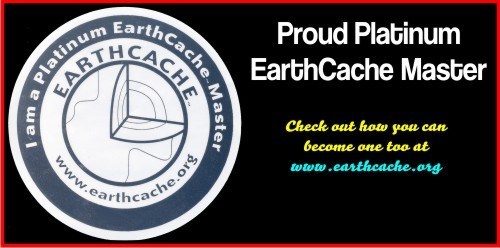This particular type of sedimentary rock was laid down in Indiana by glaciers thousands of years ago. As sediments build up, layers are buried ever deeper, drying and hardening as water is squeezed out. Over a few thousand years, the pressure of overlying layers and the heat of the Earth's interior turn layers of sediment to solid rock in a process called lithification. When sediments are powdery and soft and contain few hard sand grains, compaction alone is enough to turn them to stone. Very sandy sediments, however, are too hard to be compacted so easily. To turn to stone, sandy sediments must be glued together by cements made from materials dissolved in the water from which the debris settled. The most common cements are silicate minerals, calcite and iron compounds which give rocks a rusty red look.
Sedimentary rocks usually contain another distinctive feature - fossils, the remains of living things turned to stone. Fossils help geologists to determine the conditions in which certain rocks formed. They can tell chalks formed in shallow tropical seas, for instance, because they are studded with fossils of sea creatures that live only in such conditions. Moreover; different creatures and plants lived at various times in Earth's history. So geologists can also work out the relative ages of sedimentary rocks from the range of fossils they contain, a process known as biostratigraphy. Some sedimentary rocks, like limestone, are made almost entirely from the remains of living organisms, or else by chemicals created by them. Such rocks are described as organic. Chemical sediments such as evaporites are made from minerals precipitated directly from water.
Most sedimentary rocks, however, are `clastic' or `detrital' which means they are made from fragments or clasts of rock broken down by the weather. When rocks such as granite are weathered, they eventually crumble to form clasts. The different minerals crumble in different ways. Quartz crystals, for instance, are so hard they are left as distinct sand grains, while orthoclase feldspar breaks down into clay and plagioclase forms calcite. Although this debris all starts off together, the different kinds of clast are gradually separated as they are washed down by rivers into seas and lakes. Moving water is like a natural sieve, sorting the rock fragments into small and large by carrying smaller grains farther and faster. The farther from the source they are carried, the more they become sorted. So typically only rocks that form fairly near the source, such as some conglomerates, contain a full range of particle or grain sizes. Most rocks contain particles predominantly of a particular size of grain. The result is that clastic sedimentary rocks can be divided into three groups according to grain size: large-grained `rudites' such as conglomerates and breccias; medium-grained `arenites' such as sandstones; and fine-grained `lutites' such as shale and clay. As a river washes into the sea, or into a lake, the heaviest quartz grains are dropped nearest the shore, forming sandstones. Finer clay particles are washed farther out, forming shales. Dissolved calcite is washed farther out still, and only finally settles to form limestone rocks. This only happens once the particles are taken from the water by living things which use them for building shells and bones. When they die, they take the calcite down to the sea floor in their remains. In some rocks, such as wackes, there is a mix of grain sizes. However, even wackes may be banded into layers, with a gradation of grain size from fine at the top to coarse at the bottom. This `graded bedding' develops because the largest, heaviest grains settle out of the water first.
Making up the border of the center fountain of the park are a row of very large rocks. One of these rocks is a large sedimentary rock known as Puddingstone. These puddingstones were brought down from Canada during the last ice age by the retreat of the Wisconsin glacier about 14,000 years ago.
I expect the required logging information for this earthcache to be sent to me within three days or the "Found It" log will be in jeopardy of deletion. To log this earthcache, you must do the following:
Take a picture of the Puddingstone with your GPS'r and post the picture with your log.
Email me with the answers to the following questions (do not put them in your log). Failure to complete the requirements within 3 days of a "found it" log posting will result in log deletion.
• Based on the grain size in the puddingstone, what group of clastic sedimentary rock would this fall into?
• Rock weighs about 2.5 tons per cubic yard. What is the estimated weight of the puddingstone?
